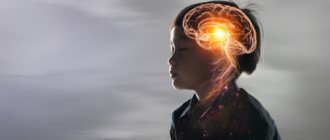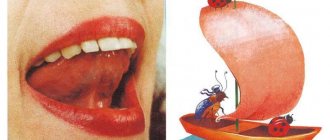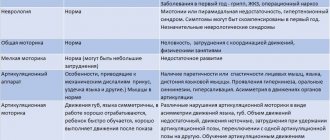Alalia is a severe delay in the development of a child’s speech, not caused by a decrease in hearing or intelligence. It is customary to distinguish sensory and motor forms of alalia. With sensory alalia, speech understanding is impaired, with motor alalia, the pronunciation of words and phrases is impaired. But sensorimotor alalia is more common.
The mechanism of sensorimotor alalia is still not fully understood. Many experts consider this diagnosis to be lifelong. But alalia can be defeated if you work comprehensively with all neurological dysfunctions.
The Prognoz clinic has been successfully doing this for more than 30 years, which is why our center is often called the alalia clinic.
Treatment of motor and sensory alalia in St. Petersburg, at the Prognoz clinic
- First, a comprehensive neurological examination is carried out using modern equipment, consultation with a neurologist and speech therapist.
- Based on the diagnostic results, experienced specialists create a rehabilitation course.
- Children undergo an intensive course of individual lessons and procedures, lasting 16 days.
Based on the diagnostic results, the following treatment methods can be prescribed:
- training using the Alfred Tomatis method (Besson of Switzerland)
- inTime
- massage
- Neurodynamic gymnastics
- Classes with a speech therapist using verbotonal equipment
- TCMP
- RTMS
- physiotherapy
and other techniques, which you can read about in the “techniques” section
Diagnosis of sensorimotor alalia in children
The diagnosis of sensorimotor alalia is made on the basis of an examination with the participation of a neurologist, speech therapist, otolaryngologist, psychologist, and pediatrician. If necessary, consultations with other specialists are prescribed. The purpose of diagnosis is to identify the exact cause of the defect and exclude other health problems that may be accompanied by speech disorders: autism, hearing loss, mental disorders.
To clarify the diagnosis and identify signs of brain damage, exclude space-occupying formations, and vascular problems, a small patient is referred to electroencephalography, vascular Doppler, MRI or CT.
Why does this help?
- We work with specific disorders in the child’s brain that are identified through objective diagnostics.
- Uses a combination of hardware and non-hardware methods
- A combination of drug and non-drug treatment is used
- The clinic’s specialists have extensive experience in helping children with alalia; we use the most effective methods that give quick results
- Doctors and teachers work as one team.
Regular sessions with a speech therapist are necessary, but a child can study for years and still remain an alalik.
Help your child speak and get rid of this diagnosis, contact the Prognoz clinic Leave a request
Request a call
A child with motor alalia has a high level of non-verbal intelligence (he understands everything), verbal intelligence is in its infancy (he does not speak or speaks little and poorly) and high emotionality (recently, some scientists have identified this as a separate type - emotional intelligence). Such a child, in most cases, from one and a half to three years of age is very kind, affectionate, and sociable, and after four, when he realizes that he is different from his peers, he becomes withdrawn, shy or aggressive.
I am engaged in the formation of verbal intelligence (speech) through intact understanding, logic and emotions. In correctional pedagogy there is such a principle - working through intact analyzers, for example, when working with sensory alalia, they immediately begin to teach reading in order to form an understanding of “sound”, audible speech through the intact visual analyzer.
Emotions: in an integrated approach, I indicated several ways that affect emotions to increase a child’s motivation, which are more effective than for children with mental retardation and sensory alalia.
I start work with the first words and lexical topics that are emotionally significant for the child. Every child has his favorite toys: some play with cars, some with “little animals”; girls prefer dolls and ponies. Therefore, it is worth asking the parents about the child’s preferences and building the first lessons on their basis: firstly, the child will make contact faster, and secondly, perhaps in his topic he already has some words or onomatopoeia with which he can communicate , and thirdly, by typing words on this topic, the child will be able to immediately include them in his play and life, he will more actively use and consolidate them.
History. Boy, 4.5 years old, motor alalia, in the active dictionary - mother, woman, give, several onomatopoeias. His passion was trams and trains. We drew them, built them from cubes, rolled them... The first word called up was the word “coupling” - connecting the cars to each other. (It turns out that he was interested not so much in trains as in the way the cars were connected). Then came a very quick set of vocabulary: driving, buzzing, carriage, train, road….
Logic: the difference between understanding speech and active speech in motor alalitics has its own characteristics. At first, such children are confused with children with developmental disabilities or considered simply lazy (“he doesn’t want to talk”). Recalling the first words through simple repetition does not work (as it does with ZRR and SA). Often, even after “talking,” a child with MA can repeat words or phrases after the speech therapist, but he does not use them independently in speech or in life. In order to form independent speech, we work:
— through questions (with SA we explain and repeat 80% of the time and ask 20% of the time, and with MA it’s the other way around)
- a large number of repetitions both when calling out words, and when forming phrases, and when working with cases in the future occurs due to the use of a large number of situations where the use of this word, case, etc. is required, and not just repetition of the same thing
Alalia correction
Children suffering from alalia have difficulties in raising them. Some parents may treat such children unfairly. They do not understand all the problems that the baby faces along the way. It is important to realize that such children require a special approach based on calm, patience, and understanding.
If a parent notices the first symptoms of alalia, they should immediately seek help from specialists. The sooner a problem is identified, the easier it is to deal with it. Timely correction will reduce the risk of complications.
The treatment of these disorders includes various techniques and methods. There are psychological, pedagogical, and medicinal approaches. The technique of transcranial electrical stimulation has a special contribution to the restoration of speech capabilities. Correction stages based on special classes must also go through:
- gymnastics;
- Speech therapy rhythm classes (logorhythmics);
- artistic and technical classes,
- reading;
- writing classes;
- speech therapy classes;
- memory training;
- special classes aimed at attention and perception;
In special correctional centers and speech therapy schools, special medical and psychological therapies are used. The drug approach is primarily aimed at stimulating and shaping damaged brain centers. Experts note the effectiveness of some procedures:
- DMV;
- IRT;
- hydrotherapy;
- laser therapy;
- electrophoresis;
- magnetic therapy;
- electropuncture;
- transcranial electrical stimulation.
The correction program is selected individually and must take into account all the characteristics of the child. The recovery process should influence the pathology itself and its accompanying diagnoses.
Treatment of motor alalia in children
When treating, emphasis should be placed on the development of the child’s motor skills, his thinking, and his ability to remember. Since this disease has a systemic nature of occurrence, the speech therapy approach is adjusted to the full coverage of sound-letter productions, visualization, and the ability to concentrate attention on something. This should be a whole range of measures that have an impact on:
- speech stimulation;
- meaningfulness of speech;
- formation and expansion of vocabulary;
- grammatical development of speech.
Multidisciplinary specialists, not just speech therapists, take part in treatment and correction. A child with alalia needs to be taught the alphabet and letters as early as possible. These skills will help to better develop memory, teach how to form words from individual sounds, and control speech.
What is sensory alalia
Sensory (impressive) alalia is a severe form of speech development, in which both understanding and speaking suffer, and a number of symptoms of the motor type of the disease are observed. According to medical statistics, in the total number of children suffering from problems with the speech apparatus, the motor type accounts for 90% of cases, while the sensory type accounts for only the remaining 10%.
Sensory alalia is a violation of a child’s understanding of the speech of others. Expressive speech (the ability to speak coherently) cannot develop in a child under such circumstances. Some believe that sensory alalia is an inability to speak due to a violation of the articulatory apparatus. However, the speech impairment here is secondary, that is, due to a lack of understanding of the speech of others, due to problems with phonemic hearing.
A child with good hearing cannot put into words the sounds that he hears from adults or pronounces himself. Therefore, he is unable to reproduce them.
With this type, damage or underdevelopment of the speech-hearing analyzer is observed. This leads to serious disruptions in analytical and synthetic activities. The sounds that the child hears are not different to him. He is unable to recognize words or even individual sounds or syllables.
Causes of sensory alalia
This disorder is caused by lesions of the brain, namely certain zones located in the cortical part of it, which are responsible for the speech apparatus, speech analysis, and understanding of sounds. The main factors that can lead to this are:
- Fetal pathologies that appear during pregnancy. Gestation can be complicated by hypoxia, infections, and malnutrition. Disturbances in the development of the fetal central nervous system may occur when consuming alcohol or drugs.
- Disturbance of the central nervous system during childbirth. The fetus can suffer damage to the nervous system if the obstetrician acts incorrectly. During childbirth, the baby may suffer a head injury.
- Diseases in the postnatal period. They can occur in the first years of the baby.
There are other reasons that can also cause such a speech disorder. Diagnosis can only be made after a comprehensive examination of the child. The baby should be examined by a speech therapist, pediatrician, neurologist, child psychologist, and otolaryngologist.
How to identify sensory alalia
To assess the state of the brain of a child who is suspected of having alalia, it is necessary to conduct an MRI of the brain and an EEG. All these research methods are absolutely harmless to the child and do not pose any health hazard.
It is necessary to clearly distinguish between sensory alalia and possible hearing loss. This should be done by a qualified otolaryngologist. To do this, he performs audiometry and otoscopy. Diagnostics should also determine the severity of existing disorders.
What are the symptoms of sensory alalia?
With this disorder, the understanding of speech addressed to the baby primarily suffers. He is unable to understand what is being said to him. When severe, the child shows complete indifference to surrounding sounds, regardless of the nature of their origin. Such children are unable to distinguish speech from other sounds and do not respond to their name. With a mild degree, the child can understand some everyday words.
A child suffering from this speech disorder has high speech activity, but it consists of simple (babbling) sounds and interjections. The meaning of this stream of sounds and words is incomprehensible to the people around. The child’s speech is more like a “word salad.”
One of the distinctive signs of the sensory type of the disease is pronounced echolalia - the repetition of individual sounds without understanding their meaning. It is difficult or even impossible for a child with such a speech disorder to repeat words spoken by an adult. The child is not able to correlate the word and the object it means.
Alaliks are characterized by a large number of speech errors. They indicate phonetic insufficiency, which is manifested by incorrect placement of stress, omission of sounds or their replacement with others. The child cannot control his own speech and makes mistakes in it.
Prognosis and prevention
The prognosis depends on the age at which sensorimotor alalia is diagnosed in children and the timing of initiation of therapy. If the diagnosis is made in preschool age, the child receives adequate treatment, regularly works with a speech therapist and psychologist, then it is possible to stop the progression of the disease and teach the patient communication skills. Articulation is normalized. Subsequently, he is socialized and can study in a regular school.
The participation of parents in the correction of sensorimotor alalia and their understanding of the complexity of the situation is very important. Unfortunately, such violations do not go away on their own. A good result requires patience, desire and effort on the part of both parents and baby. Try to motivate the baby, encourage, praise for success. Follow your speech therapist's recommendations.
If you trigger sensorimotor alalia, then stuttering, mental retardation, and nervous tics may occur. This will worsen the already difficult prognosis and negatively affect the future life of the child.
Prevention consists of clear pregnancy planning. The expectant mother should eat a balanced diet, get enough rest, and see a doctor regularly. During childbirth and the first years of the baby’s life, you should carefully monitor its development, prevent injuries and promptly treat infectious and other diseases.
If you find symptoms of sensorimotor alalia, contact a specialist so that they can examine you and identify the cause of this condition.
Prevention of alalia
This disease can be congenital or acquired. Scientists have identified certain patterns in the appearance of this serious disease. It can appear after fetal hypoxia, a number of complications during pregnancy, and early childbirth.
Prevention of natural causes is impossible or extremely difficult. The baby may suffer a head injury during childbirth. Alalia is also caused by etiopathogenetic factors. These include:
- rickets;
- viral encephalitis;
- TBI;
- malnutrition;
- meningitis;
- viral diseases and complications after them.
A number of these reasons can be completely avoided, thereby minimizing the risk of pathology. These are the following measures:
- parents should give up bad habits;
- Before planning a pregnancy, undergo all the necessary tests to identify diseases in the mother.
- During pregnancy, the mother should avoid infection with viral infections and exacerbation of chronic diseases as much as possible.
- use medications that are safe for the fetus.
- undergo all required examinations during pregnancy.
- After birth, it is necessary to talk and engage in educational games.
- If symptoms of mental or neurological disorders appear, immediately contact a speech therapist, child psychologist or neurologist.
- carry out vaccinations prescribed by doctors, including for mother.
Such preventive measures will ensure good development of the nervous system, development of speech and motor skills.
Treatment of sensorimotor alalia in children
Therapy for children diagnosed with sensorimotor alalia should be comprehensive, based on the individual characteristics of the disease in a particular child. It is also necessary to be systematic and attend classes regularly.
Treatment consists of medical, speech therapy, and psychological assistance.
The medical component of therapy consists of prescribing medications that stimulate brain metabolism and restore connections between neurons. Nootropics, multivitamins and other groups of drugs are used as needed. The course includes physiotherapeutic techniques (laser therapy, acupuncture, electrophonophoresis, electrical stimulation, magnetic therapy), massage.





